Uncrewed systems will soon become a defining feature of the UK’s conventional forces, with Defence Minister Luke Pollard confirming that drones and unmanned ground vehicles (UGVs) will be fielded in high numbers over the next five years.
In a written answer to Liberal Democrat MP Edward Morello, Pollard pointed to the Strategic Defence Review (SDR) 2025, which he said recommended “a shift towards greater use of autonomy and Artificial Intelligence within the UK’s conventional force.”
The SDR set out a “common digital foundation of data, Artificial Intelligence (AI), synthetic environments, and networks” designed to connect people and platforms across domains and with allies. According to Pollard, this approach will provide the Integrated Force with “agility, speed of manoeuvre, and effective targeting to outmatch adversaries.”
The government is looking closely at lessons from Ukraine, where AI-enabled drones have transformed battlefield awareness and strike operations. The minister said the ability of drones to carry sensors across the electromagnetic spectrum has “removed many of the traditional barriers associated with operations at night or in restricted visibility.” Importantly, he added, AI gives drones the capacity to continue surveillance and targeting when human teams are resting or unable to operate, which is now a “fundamental consideration for UK Defence’s capability development.”
Over the next five years, the UK intends to field uncrewed platforms in large numbers as part of a “high-low” mix of capabilities, networked with fifth- and sixth-generation crewed aircraft. Their design will be tailored to specific environments, whether operating undersea, at sea, on land, or in the air.
Pollard said that this high-low force structure would combine advanced manned systems with numerous autonomous platforms to expand coverage and resilience. “Uncrewed and autonomous systems will be incorporated into the Integrated Force in high numbers,” he explained, with their development forming a central strand of future capability.
For ground forces, UGVs are expected to take on an increasing share of combat support roles. These systems could relieve pressure on personnel, operate in hazardous environments, and integrate with other platforms to provide data and effects.
While specific projects are already in progress, Pollard said detailed information could not be shared while they remain in the concept phase. The minister said however, that the shift towards AI-driven autonomy is no longer experimental, but a central plank of the UK’s force development strategy.


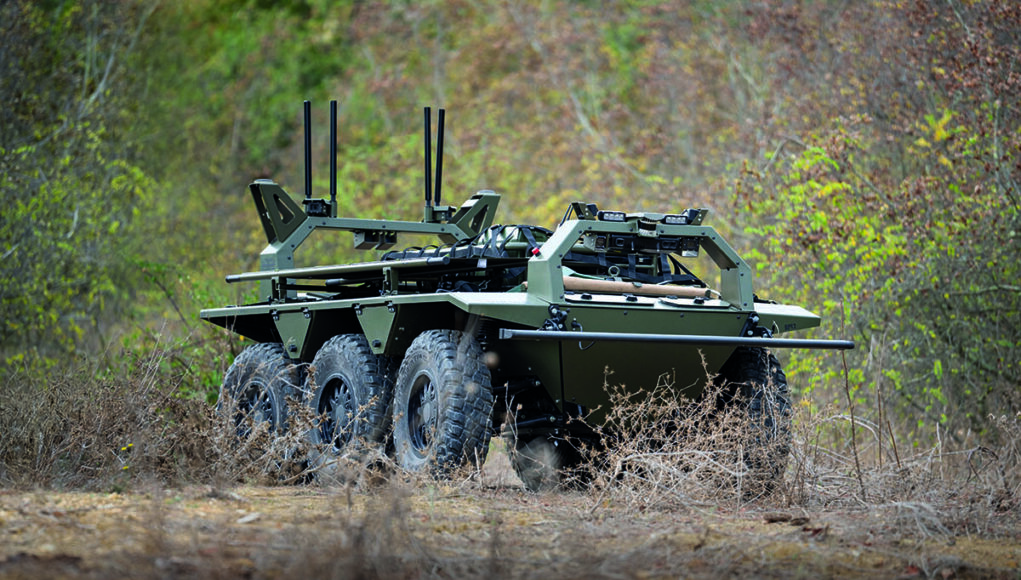
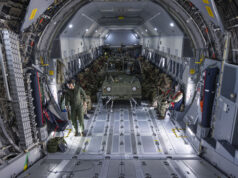



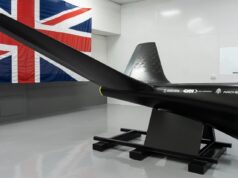
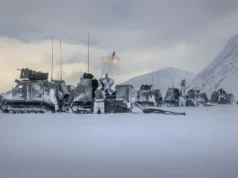

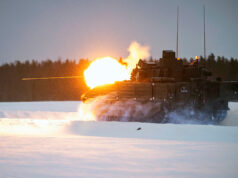

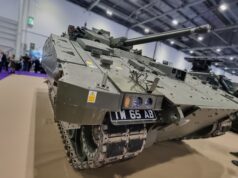

Concept phase to deployment in large numbers in 5 years? I’d be shocked if that was an outcome from a financially stressed MOD where every overtime request nowadays requires a 3 Star sign-off and a sacrifice of a small goat.
My concern is having such a large part of the forces automated is what happens in a battlefield environment if an EMP (electronic magnetic pulse) weapon is used? I understand that they would probably have the electronics shielded in some way. Whilst seeing the benefits of advancing technology please let’s not put all our eggs in one basket. I do note that apparently the Royal Navy still teaches navigation using sextant in readiness for technology failure.
“Tra la la, la la la one potato two potato three potato more”
( you have to be really old to get this link).
Replacing Boots on the ground with Mechanics in the workshops, the furture is Drones, the future is here.
Good to see we have a “Central Plank” ( no, not Starmer !)
“In large numbers”. 10? 15?
RN leading the way with cutting edge drone tech. 2 Peregrine camcopters, a dozen Malloy medium lift vehicles and a bunch of hand launched rc aircraft.
2030 will be when all our dreams come true…
AA
1 is larger than 0?
One way to establish a core of excellence is to replace functions that are otherwise carried out by well-trained troops. Also, supply under hazardous conditions and mine laying and clearance are suited for autonomous systems. The thorny issue of recruitment is also addressed to some extent.
Oh ok, more words, all will be fine in 5 years etc etc, same old story. Not now, not next year but 5 years may be. Does it have a fancy project name like all others going no where with nothing to show so far? Have some more meetings, get some industry experts in paid to be there of course. Talk a lot. but order nothing.
What is next? a plan to travel at warp speed and transport things ship to ship via magic rays?.
2030 is the new default when all the UK’s brand new systems and kit will be delivered, which is fine if Russia doesn’t mess it all up!! Sadly, organisations love ‘Objective Dates’ and the longer the better. Remember Labour’s SDR 2025, when everybody appeared not to commit due to the pending report. The vital question is, how many months were wasted as we all awaited the publication?
Every thing will be fine by 2030, and if not Labour will not be in power then and CDS will have retired, We had an SDR but since that on the whole the MOD has done nothing, the Army has got nothing new. That how its going to stay excuse after excuse, meeting after meeting but not much else.
I’ve seen an interesting UGV, forget its name. A Rheinmetal product I think. The Army bought a couple of dozen or so years ago for trials. Can carry a GPMG and other kit.
So it exists, why the wait?
We also saw some robotic K9s with 16AA a while back, with MoD stating it was the first such Bde to be so equipped.
The cynic in me asks, how many constitutes a Bde equipped. 2? 4?
They never say. But that allows the smoke and mirrors to descend.
The Company I am interested in is Milrem from Estonia. Originally they were using the smallish tracked Themis in Mali as a load carrier. Where it would support infantry on foot patrols carrying food, water, ammo etc. However, Estonia then sent 15 of them to support Ukraine. Which were used a basic load carriers along with casualty evacuation. Subsequently they are now using additional Themis with a 40mm Mk19 grenade launcher fitted to a remotely operate turret. According to the blurb, Themis can operate from a distance of 1.5km from the operator over a line of sight datalink and can be remotely operated by hard-line from 100m. I have read that Milrem will be/have sending Ukraine the mine clearing version of Thermis. There hasn’t really been much reporting on the operational performance on the Themis. But as Milrem are sending more versions to Ukraine, it must be good enough for Ukraine to keep using them!
Interestingly, since Milrem developed Themis, they have other larger UGVs, such as the 8×8 Havoc, which looks like a mini-Patria and can be armed with a turreted 30mm autocannon plus ATGMs. Then there’s the tracked Vector along with the MRCV. Both can be outfitted for either combat or engineering support
So what would the theoretical distribution be to the Infantry? Would they augment a Section, or be at Platoon level?
Looking at the headline photo, I think that might be the UGV I had in mind, it looks like it.
I think 2 Yorks have been playing with them for a few years now already.
I recall CGS or similar talking of assets like Ch3 and Ajax paired with a couple of UGV each. A lot larger and fighty than these things in their case.